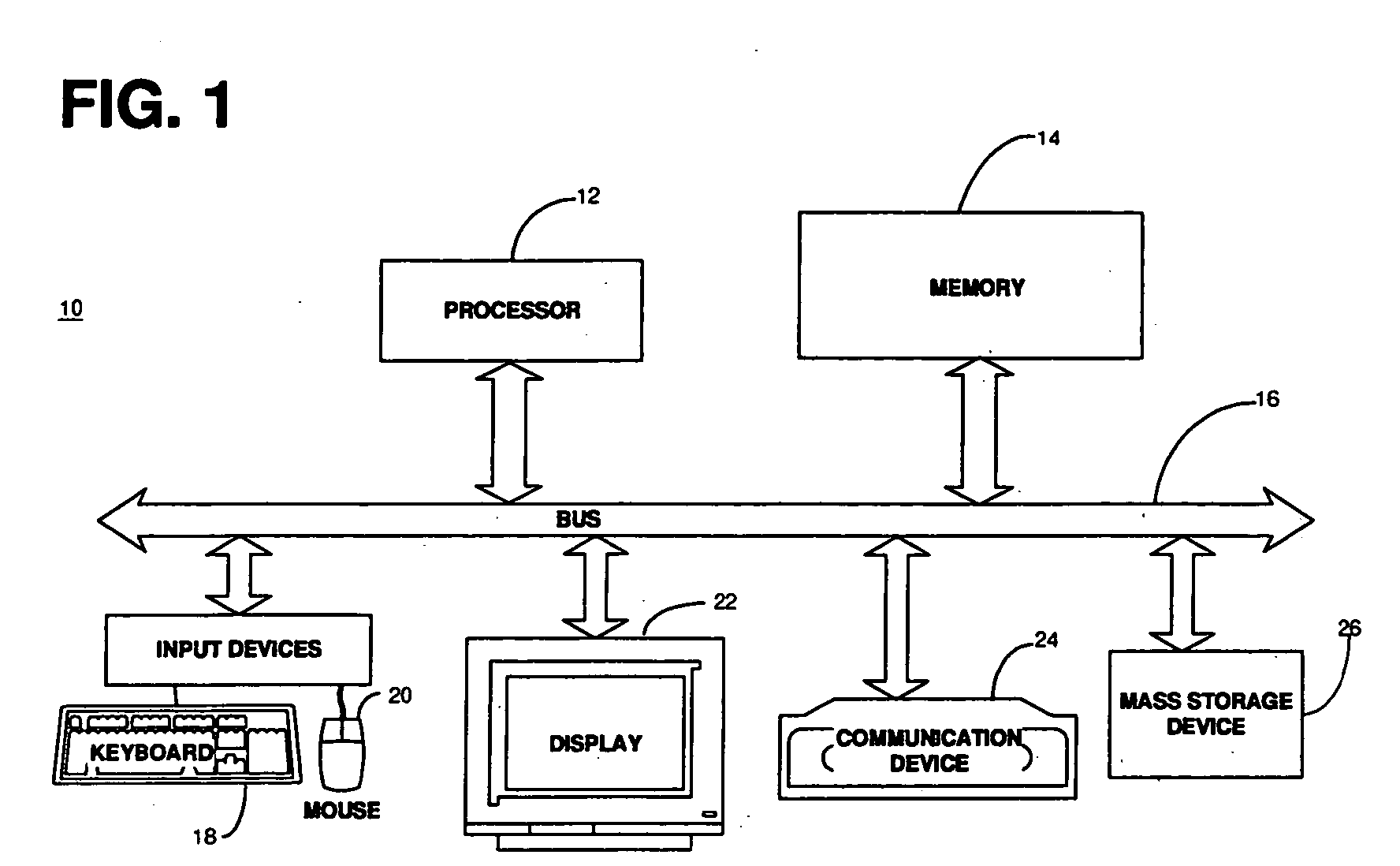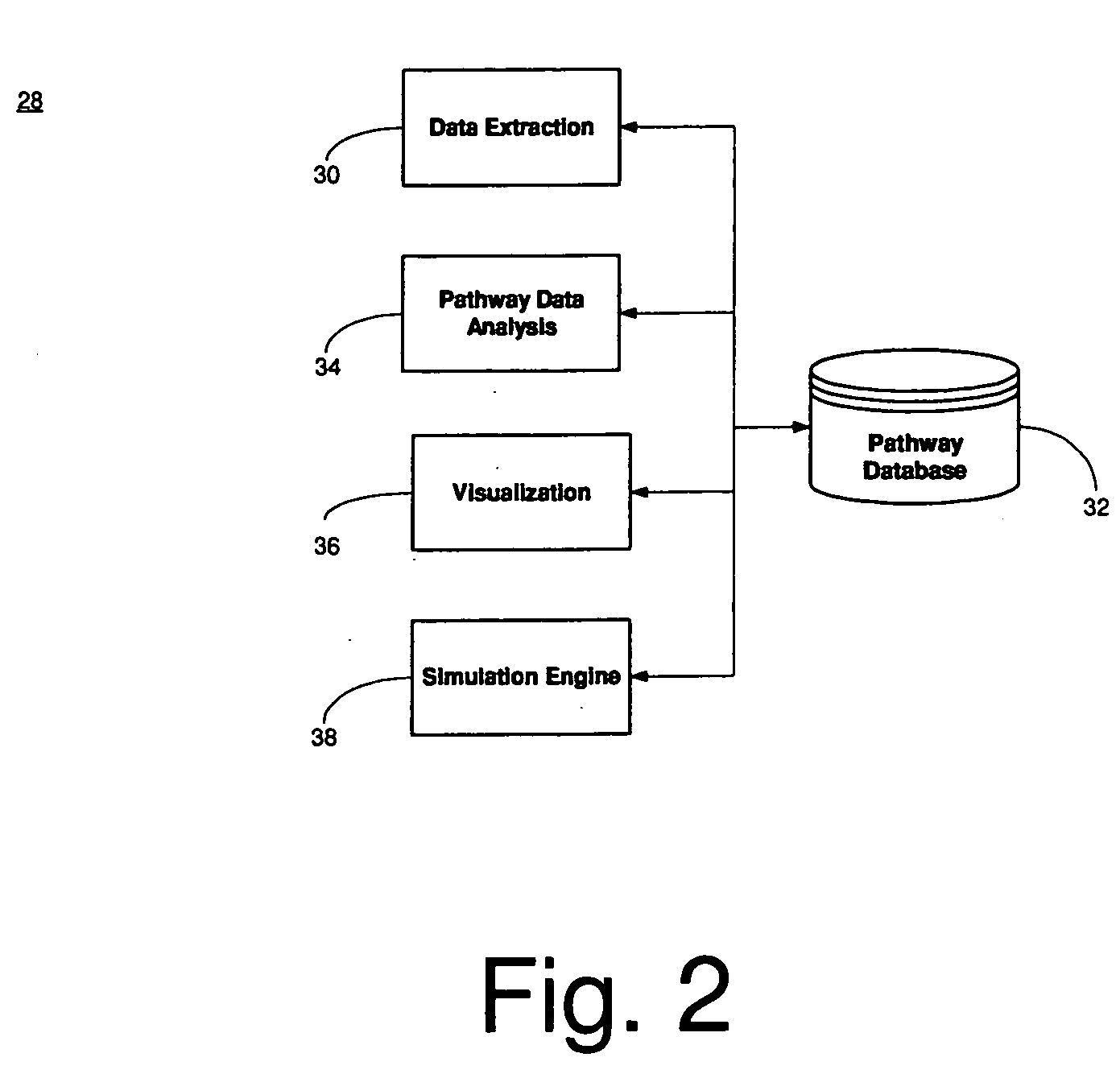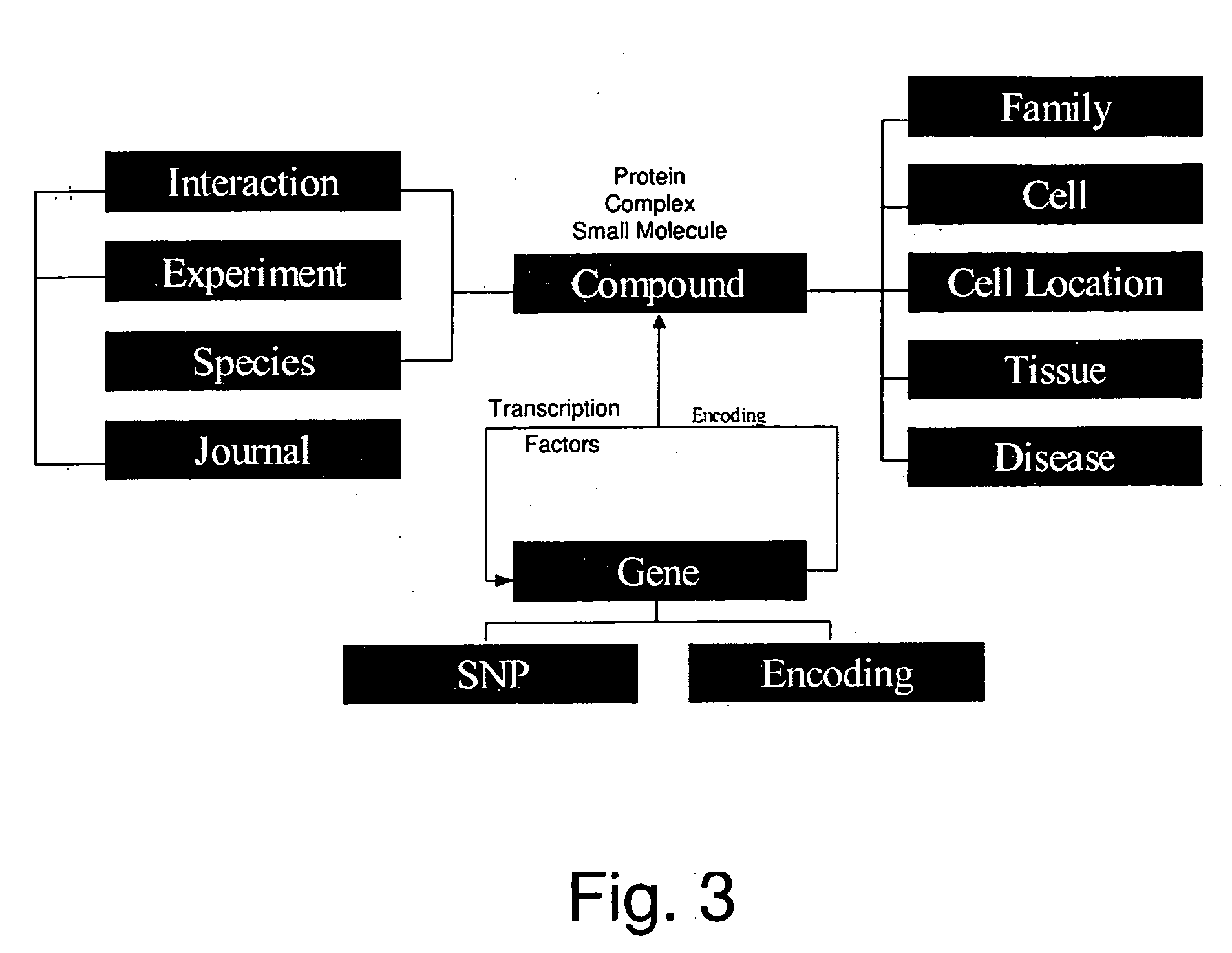System, method and computer product for predicting biological pathways
a biological pathway and computer technology, applied in the field of bioinformatics, can solve the problems of time-consuming and time-consuming approach to developing pathways, inability to efficiently organize biological data, and inability to develop pathways
- Summary
- Abstract
- Description
- Claims
- Application Information
AI Technical Summary
Problems solved by technology
Method used
Image
Examples
Embodiment Construction
FIG. 1 shows a schematic of a general-purpose computer system 10 in which a system that automates hypothesis generation of new pathways operates. The computer system 10 generally comprises at least one processor 12, a memory 14, input / output devices, and a bus 16 connecting the processor, memory and input / output devices. The processor 12 accepts instructions and data from the memory 14 and performs various calculations. The processor 12 includes an arithmetic logic unit (ALU) that performs arithmetic and logical operations and a control unit that extracts instructions from memory 14 and decodes and executes them, calling on the ALU when necessary. The memory 14 generally includes a random-access memory (RAM) and a read-only memory (ROM); however, there may be other types of memory such as programmable read-only memory (PROM), erasable programmable read-only memory (EPROM) and electrically erasable programmable read-only memory (EEPROM). Also, the memory 14 preferably contains an ope...
PUM
 Login to View More
Login to View More Abstract
Description
Claims
Application Information
 Login to View More
Login to View More - R&D
- Intellectual Property
- Life Sciences
- Materials
- Tech Scout
- Unparalleled Data Quality
- Higher Quality Content
- 60% Fewer Hallucinations
Browse by: Latest US Patents, China's latest patents, Technical Efficacy Thesaurus, Application Domain, Technology Topic, Popular Technical Reports.
© 2025 PatSnap. All rights reserved.Legal|Privacy policy|Modern Slavery Act Transparency Statement|Sitemap|About US| Contact US: help@patsnap.com



